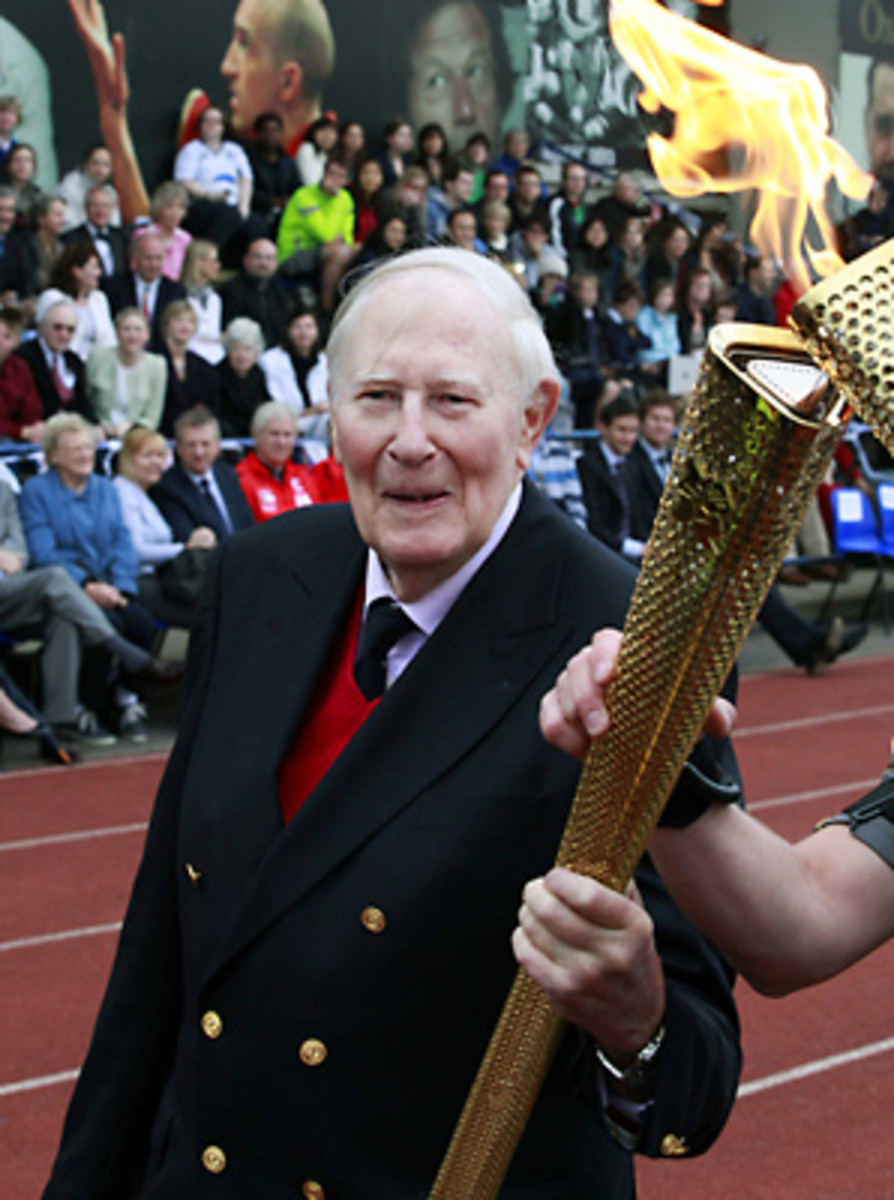
Who'll light the Olympic cauldron? Here are the leading candidates
With the opening ceremonies of the London Olympics rapidly approaching, several names have emerged as candidates to light the cauldron at the opening ceremonies on Friday. Here are the likely few.
No British athlete in history is more synonymous with athletic achievement and the dignity he displayed with it than the man who ran the first Sub-four-minute mile. Sir Roger, now 83, attended Oxford and became a distinguished neurologist before retiring in 1993. After finishing a disappointing fourth in the 1,500 meters at the Helsinki Olympics in 1952, Bannister set out for one of sports' iconic milestones. In May 1954, he ran the mile on the Iffley Road Track at Oxford in 3:59.4. He was SI's very first Sportsman of the Year in January 1955, and -- little known fact -- he initiated the first testing procedures for steroids.
The 50-year-old rower is perhaps the most accomplished British athlete in history. Redgrave won gold medals at five straight Olympics between 1984 and 2000, winning twice in four-man boats and three times in two-man boats. He has twice carried the British flag at Olympic opening ceremonies. He is one of the few rowers in history to have won titles rowing from both sides (i.e. starboard and port). Even more impressive, Redgrave dealt with a series of illnesses, including diabetes, throughout his career. Three times he has run the London Marathon to raise money for charity.
The 53-year-old, two-time Olympic champion in the decathlon was among the colorful and quotable figures in the history of his sport. His humor was a sort of defense mechanism for a difficult upbringing. The son of a Nigerian father and Scottish mother went to boarding school as a rambunctious seven-year-old. When Thompson was 12, his father, a taxi driver, was shot and killed in a random shooting. Thompson won medals at the European championships in 1978 and 1986. In between, he won golds in Moscow and Los Angeles, before taking fourth in Seoul, where his pole snapped in half during a pole-vault attempt.
Yes, he is the head of the London Olympic Organizing Committee (LOCOG) and no organizing committee chief has ever lit the caldron at an Olympics. But then again, no athlete with the resume of Coe has ever headed an organizing committee. Lord Coe won four Olympic medals, including gold at 1,500 meters in 1980 and 1984. For the span of one hour, he simultaneously held world records for the 800 meters, 1,000 meters, 1,500 meters and the mile. He became a conservative party member of Parliament for five years in the 1990s and is now a vice president of the IAAF, the international governing body of track and field.
Though inspired by the exploits of Seb Coe, Dame Kelly Holmes, 42 did not originally have plans to be a runner or the double Olympic champion she became. She left school at 16, worked as a sweatshop assistant and a nursing aid for disabled patients before joining the British Army at 18. There she worked as a driver and later a physical training instructor before turning to judo -- and becoming Army champion -- before exploring track. After she began running in Army competitions, she soon had to run against men because she was too speedy for the women. Once out of the Army, she suffered from clinical depression while dealing with injuries that briefly curtailed her career. In 2000, she finally made the British team, winning silver in the Olympic 800 and then gold in the 800 and 1,500 in 2004.
It wouldn't be the first time a random youngster lit the torch. At the Calgary Winter Olympics in 1988, a 12-year-old budding figure skater named Robyn Perry was chosen to symbolize the hope of children as they watch the Olympic Games. Perry never did become an Olympian -- she is a health care provider -- but she had her moment. At the Montreal Games in 1976, teenagers Sandra Henderson and Stephane Prefontaine (no relation to track legend Steve Prefontaine) were selected to be co-cauldron lighters. He became a venture capitalist. She has kept herself hidden. Given the London Organizing Committee's vows to help rebuild the city's downtrodden East End, a child from there could represent the entire area.





